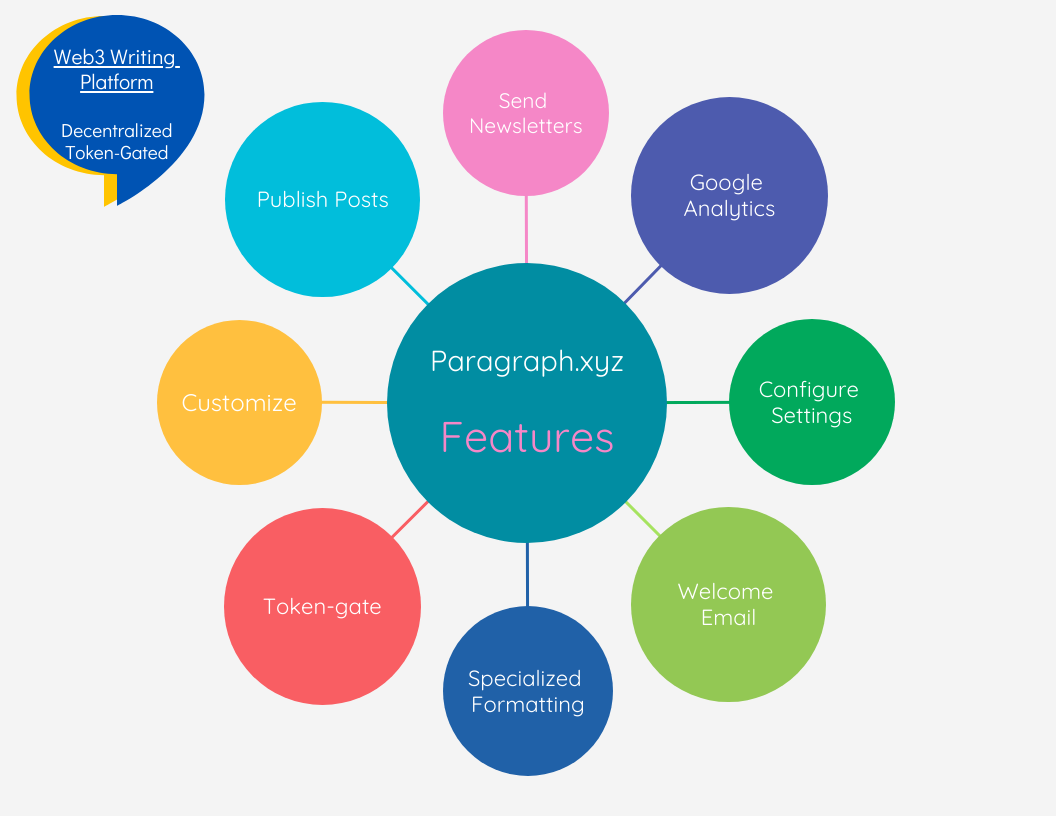Is Paragraph the new (and better) writing platform?
Writers are craving a decentralized writing platform

Before we can answer the question is Paragraph the new (and better) writing platform, we first need to know what Paragraph is.
First of all, Paragraph is the first web3 decentralized publishing and newsletter platform. Founded in 2021 by Colin Armstrong, founder and chief executive of Paragraph, the strategy was to give writers, decentralized autonomous organizations, nonfungible token developers, and other communities in the blockchain ecosystem greater control over their content distribution and monetization.
For writers, that is great news. One of my favorite authors, Tim Denning said this about this new promising platform.
"Bloody beautiful, mate. They’re the talk of the town after raising a pre-seed round of $1.7m from investors. Google even threw some money at them!"

Content writers now have a new option for writing and publishing their posts and newsletters. The following is just a small list of benefits you can enjoy.
Publish posts
Send newsletters
Customize your publication
Token-gate your content
Change your publication's font & colors. Use your own creativity.
Set up a welcome email for subscribers.
Configure your publication's settings.
Add links, set up a custom domain, configure Google Analytics, and much more.
Paraphrase wants to enable creators to have a smoother and more organized publishing experience, as well as the ability to own, distribute and monetize their created content. Through the creation of NFT-based memberships, Paraphrase will transfer ownership of communities back to content creators, curators, and community builders, ushering in a new era of digital content production.
Paragraph.xyz has provided a comparison of themselves vs their competitors Substack, Mirror, and Medium. Paragraph came out way ahead of its competition in its analysis. You can see their comparison tables on their main page under Why Paragraph, or if you want to look at the individual comparisons, I have supplied the links below:
https://paragraph.xyz/vs-substack
https://paragraph.xyz/vs-mirror
https://paragraph.xyz/vs-medium
Comparison Web 2.0 and Web3
In Web 2.0 the biggest problem is that creators do not own distribution or connection to their readers; the platforms do through using walled gardens and closed ecosystems.
With blockchain-based ecosystems and Web3, those relationships are more direct. Audiences are rewarded because they can now interact directly with creators. Creators are rewarded because they can sell memberships directly to readers. Fans and supporters get to choose to support a newsletter by directly involving themselves in the creation of a newsletter.
Now creators can sell tokens. Once the users prove ownership, bingo, they can now receive the newsletter in their email.
"According to SiliconANGLE, That can even be fine-tuned further for different tiers of NFTs. For example, there could be multiple newsletters, each optionally gated with different tokens, with different content, and possibly with different tiers of NFTs for types of content for community members to support the creator. That way the community would be able to access standard content with a standard-tier NFT and a premium NFT could provide access to additional media for a higher cost."
Paragraph's main focus is to improve the way things are now in three core areas: content creation, distribution, and monetization. In order to test blockchain technology, Paragraph has partnered with multiple companies including distributed identity provider Unstoppable Domains, collaborative publishing tool Clubs.link, and the social network protocol Farcaster.
